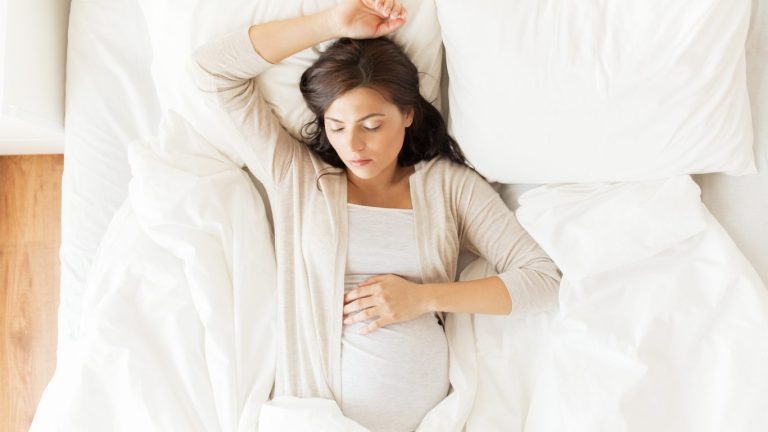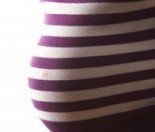If you’re pregnant and suddenly Googling whether sleeping the “wrong way” can hurt your baby—breathe. You’re in the right place.
You’re not being dramatic. You’re not overthinking. And no, you don’t need to wrap yourself in pillows and stay awake all night stressing. But there is something important that many women are only just learning: how you sleep in the third trimester actually matters.
And it’s not something most of us hear about at our first prenatal appointment.
Here’s what the research says—and what doctors and baby charities are now urging pregnant people everywhere to do differently.
So Why Is Everyone Suddenly Talking About Pregnancy Sleep Positions?
Well, if you’re anything like most mums-to-be, the third trimester hits and sleep gets harder anyway. You toss. You turn. You wake up sweating or with a leg cramp from hell. And maybe, at some point, you wake up flat on your back and think—”Is that bad?”
You’re not alone.
A new wave of awareness has hit social media and health forums thanks to studies linking one common sleep position with an increased risk of stillbirth. That’s right—stillbirth. The word no parent wants to see.
But before panic sets in, here’s what you really need to know.
The Shocking Link: Back Sleeping and Stillbirth Risk
According to research published in The British Journal of Obstetrics and Gynaecology and highlighted by Tommy’s.org, sleeping on your back after 28 weeks pregnant may increase the risk of stillbirth.
Let’s be clear: it doesn’t cause it directly. But it can double the risk compared to sleeping on your side.
Why? It all comes down to basic anatomy.
Your Uterus Is Bigger Than Ever—and It’s Pressing on Important Stuff
As your baby grows, your uterus becomes heavy enough to put serious pressure on two major blood vessels: the inferior vena cava and the aorta.
- The vena cava returns blood from the lower part of your body to your heart.
- The aorta is the big one that sends oxygen-rich blood to your organs—and yep, to your uterus and placenta.
When you lie flat on your back, you’re essentially squashing those vessels under the full weight of your pregnancy. That means less blood getting back to your heart. Less blood reaching the uterus. Less oxygen going to the baby.
It’s like crimping a hose while watering a plant. The water slows. The roots suffer.
That Pressure Doesn’t Just Affect the Baby
You might notice you feel dizzy, short of breath, or nauseous lying on your back—especially later in pregnancy. That’s your body struggling too.
Some women also report:
- Heart palpitations
- Sweating
- Sudden need to change positions
That’s your cue to roll over.
So What Is the Safest Sleep Position?
Side-sleeping wins by a mile. And according to Red Nose Australia, it doesn’t even matter if it’s your left or right side—both are better than lying flat.
The key is how you fall asleep.
Why? Because most people stay in their starting position the longest. That’s why doctors now recommend:
- From 28 weeks onward, always go to sleep on your side—for every nap, every night, and every time you wake up and go back to sleep.
- Use a pillow behind your back to prevent rolling.
- Tuck a small pillow between your knees for comfort.
- If you wake up on your back—don’t freak out. Just turn back to your side.
It’s effort, not perfection, that counts.
What the Research Actually Says
The largest study so far, the New Zealand Stillbirth Study, and follow-ups like the MiNESS study in the UK, found that going to sleep on your back in the third trimester doubled the risk of stillbirth compared to side sleeping.
Let’s put that into perspective.
Stillbirth in late pregnancy is rare. But if something as simple as changing your sleep position can lower the odds even more? Worth it.
Common Myths—And What’s Actually True
MYTH: You should only sleep on your left side.
TRUTH: Both left and right are safe. Left might be marginally better for circulation, but both are recommended.
MYTH: If you wake up on your back, you’ve harmed your baby.
TRUTH: You haven’t. Just roll back over. The key is how you go to sleep.
MYTH: You need fancy pillows or expensive beds to do this.
TRUTH: Nope. Just a regular pillow behind your back or between your knees works wonders.
Final Thoughts (Especially If You’re Feeling Overwhelmed)
If you’ve been lying on your back, don’t panic. This isn’t about guilt or shame. It’s about awareness.
Pregnancy comes with 10,000 rules, and this one often gets buried under advice about baby names, breast pumps, and when to paint the nursery.
But here’s the thing—this one’s easy. You don’t need to buy anything. You don’t need to do yoga. You just need to roll over. Side sleeping isn’t just comfier for many—it’s safer too.
Want to Learn More?
Check out these links for science-backed info:
Start your nights on your side. Use pillows if needed. And trust that this small shift can make a big difference.
Because sleeping on your side? Might just be one of the most protective things you can do for your baby—starting tonight.






